Opinion
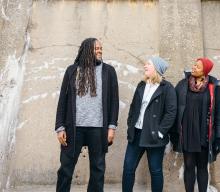
The Many is an indie folk/gospel, liturgically-grounded worship band that creates music for people to sing together. Assistant Web Editor Christina Colón spoke with producer Gary Rand, manager and writer Lenora Rand, and lead singer Darren Calhoun, to learn more about how The Many is creating liturgies that speak to issues of injustice and leave room for lament.
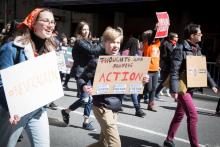
It’s 8:20 a.m. on March 20, 2018. I’m sitting in my math class, anxiously refreshing Google, waiting for anyone to confirm what my classmates and I suspect is going on downstairs. News confirmations won’t start coming out for about another 10 minutes. We heard the sirens and knew something was wrong, but still none of us wanted to believe our worst nightmare. None of us wanted to believe a school shooting would happen to our school.
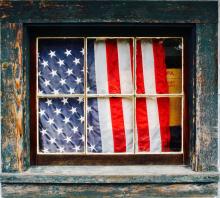
Despite the split decision of this election— with the House going to the Democrats and the Senate to Republicans — the results do not mean it will be easy to prevent Trump from making further dangerous, corrupt, or autocratic moves over the next two years. But the election does mean that any moves like these will be challenged by key oversight committees in the House; at least after the new Congress is seated on January — but the lame duck session between now and then becomes a dangerous time to see what Donald Trump may try to do.

Earlier this week, journalist Yamiche Alcindor asked Donald Trump about whether his rhetoric — and that of his party — emboldened white nationalists. Trump responded, "That's such a racist question." This happened on the same day in which a prominent white nationalist leader posted pictures of himself parading on the White House lawn.
Trump’s response follows a trend. When a reporter asked about his rhetoric contributing to violence, he said: “You're creating violence by your question.” When asked about the offensive ad that he ran in the lead up to the midterms, Trump replied, “Your questions are offensive.”
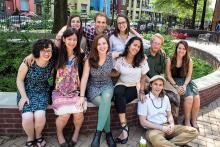
More than 30 Augusts have come and gone, and nearly 300 people have held the title of being a Sojourners intern. This year, it was announced that the 34th cycle would be the last to hold that name.

On Nov. 8, 2008, Marcelo Lucero, an undocumented immigrant from Ecuador working at a dry cleaning store, was attacked by seven teenagers from the local high school in Patchogue, Long Island, and stabbed to death. His attack, according to testimony, was part of a weekend “sport” in which these teenagers routinely targeted and attacked brown-skinned people.
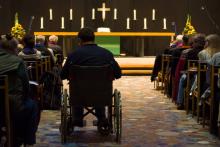
Going to a new church as a disabled person is a brave act. Why? Because churches have a history of being unwelcoming to us.
I love the church. I can’t and won’t give the church up, no matter how wounded I feel. Yet, I know more disabled people who have left the church than who have stayed. I know more parents who have left after giving birth to or adopting children with disabilities than who have stayed. Whenever I’m asked about Christian speakers, writers, and leaders who are disabled, I pause to think if I can add any new names to the short list.

After the statement was released, I put out a call on Facebook for people to share whether or how I Kissed Dating Goodbye affected their experiences with dating, marriage, and sex. Reading through these comments and PMs was heartbreaking as most of the respondents had highly negative replies. Most of the people who responded expressed how the purity movement in general and the book in particular warped their views of dating, marriage, and themselves.

Of all the various surveys and polls I’ve seen leading up to today’s election, one was the most disheartening and depressing: The 2018 American Values Survey by the Public Religion Research Institute. While examining voters’ attitudes on a wide range of issues facing the electorate, most revealing are the views of white evangelicals. This constitutes nothing short of moral and ethical indictment, documenting with irrefutable evidence the failure of this group to embody many values of the gospel they confess.
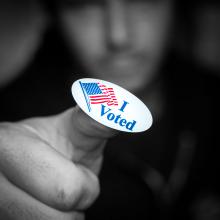
Vote today. Choose the candidates you think represent the best chance to bring God’s values of love, inclusion, justice, healing, and compassion into our world.

In a time like this, prayer is not perfunctory, an add on, or a brief closing to a meeting. Rather it is an opening to what indeed has now become “spiritual warfare” as the New Testament describes.
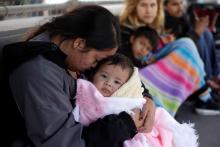
One day, Naomi and Ruth crossed the border,
This day, we see streams of new refugees.
God, you have called us to welcome the stranger;
May we in love welcome people like these.
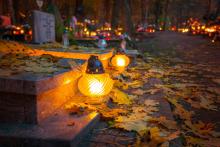
Creation is all one thing, like a giant blanket. There are many threads on the blanket, all woven tightly together. When someone dies, they move from one thread to an adjacent one, but they’re still wrapped snugly around us, and not just in some metaphorical way.
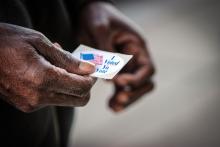
Our faith is offended by these assaults that contradict the biblical commands to love and protect our neighbors. Our conscience is seared by the lies and strategies of hateful politics that will lead to more and more violence in this country and put the soul of our nation in jeopardy. Words matter and hateful words do lead to violence. Our commitment to our brothers and sisters under attack will lead us to pray, stand, act, and vote against the politics of fear and hate, because of our faith and patriotism.

Whoever makes the bomb or pulls the trigger is culpable, of course. But he does not act alone. The social media trolls are as complicit in this violence as the mobs who gathered to watch the spectacle of lynchings. Fox News and Breitbart are as connected to these attacks as 19th century newspaper editors were when they ran sensational stories about black men ravaging white women to rally the Red Shirts who overthrew Reconstruction governments. Politicians who push stories that sow division today, from the White House to the County Commission, will stand in history alongside the Southern gentlemen of the 1960s who never ordered the death of a single civil rights worker but stoked the rage that ultimately erupted in the murders of Medgar Evers, Martin Luther King, Jr., and so many others.
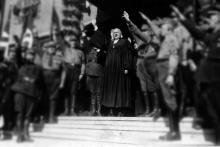
Lately, I have been asking myself the following question: How can sincere Christians embrace white nationalism? My question stems less from surprise and more from a desire to understand the mechanics. In church circles and in seminary, I heard about Barth, Bonhoeffer, and those who resisted. But I rarely heard about the majority of white Christians who supported a demagogue whose rhetoric had violent consequences.
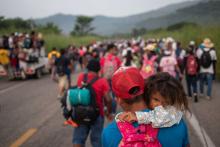
Requesting asylum by presenting at a point of entry is the legal way to seek protection; it's not an assault on this country. To "other" brown-bodied people is destructive, especially if they’re in vulnerable situations, because it creates categories that automatically view some as superior. This has been the basis for many of the world’s greatest tragedies. Fear is the basis of all of these accusations.

We’ve gotten yet another reminder of the power of words in the past few days. A man immersed in racist words killed black people in a Kentucky grocery store. A man immersed in fearful words sent bombs to people labeled as threats. A man immersed in anti-Semitic words killed Jewish people in their synagogue.

In the richest nation in the history of the world, 140 million Americans are poor or low income — one emergency away from not being able to meet their basic needs. We cannot be distracted by arguments about which president or party in recent history had more quarters with over 4 percent economic growth while Congress seriously considers cuts to programs like the Supplemental Nutrition Assistance Program (SNAP) and the Children’s Health Insurance Program (CHIP). Donald Trump is not on the ballot this November, but the fate of poor people in America certainly is. In state legislature and congressional races, we must ask ourselves which candidates are willing to challenge the lies that keep millions of our neighbors in poverty.

Shirer’s comments and white evangelicals’ use of her statements are problematic because this way of thinking has been used against African-American Christians for years to prevent us from seeking justice and equality. It’s also used to neutralize our message that our lives matter too. White evangelicals use this way of thinking to deter people of color from protesting and challenging the political status quo. It’s a lazy attempt to avoid issues of race. Many pastors and church leaders don’t want to discuss race and how it affects their churches and denominations, especially during such a heated political climate. It seems that mainline churches would like people of color in their congregations to shut up about race and assimilate into their church culture masked as Kingdom identity.